Last Updated on October 13, 2019 by Soumya
Did you ever imagine that watching a dance form could be a great way to know about Bali and its culture? Probably the best way to get introduced to Balinese Hinduism? And an amazing opportunity to experience an interesting art form of the Southeast? Well, I did not until I watched this really captivating performance at one of the many temples in Bali. It was called the Kecak Fire Dance.
Let’s Find Out Why Watching A Kecak Fire Dance Is A Must-Do in Bali
Bali is the perfect destination for all kinds of travelers – the food-lover, the adventure-enthusiast, the nature-seeker, and the island-hopper. Bali is full of exciting things to do. For me, a trip to Bali was a cultural extravaganza. Bali was all about beautiful temples, a peek into the ancient art of shadow puppets, and a fascinating dance form called Kecak. In this post, let us explore the world of Kecak Fire Dance.
What is a Kecak Fire Dance?
Kecak Fire Dance or simply Kecak (pronounced Kechak) is a mesmerizing dance and music performance that developed in Bali in the 1930s. The drama is based on the Hindu mythology of Ramayana and features 4 important characters: Ram, Sita, Ravana, and Hanuman. It deals with the episode of Sita’s abduction by Ravana and then her rescue. However, the portrayal is not an ordinary one. That is why it is such a must-do on every Bali itinerary.
Kecak starts with more than 100 performers arriving on the podium and continuously chanting “chak” to set the stage for the battle of Ramayana. The chant goes something like this “chak kecak kecak” and hence, the name Kecak. The performers wear chequered clothing and sit in concentric circles around a centerpiece of fire. The performance is, therefore, called the Kecak Fire Dance.

The Origins of Kecak
Kecak originated from a sacred Balinese dance called the Sanghyang. It is believed that a hyang or spirit enters the body of the dancer and forces her into a state of trance. This induces her to dance and move to chants of the Sanghyang choir. This is something the dancer does not remember when she gets back to normal. The Kecak Fire Dance has a similar base – the presence of a chak chorus. However, the dancers are not entranced. Rather, they are trained in presenting the story of Ramayana.
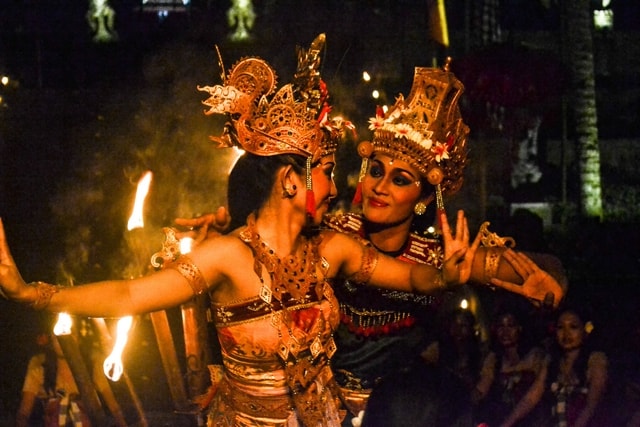
Alternately, Jakarta Post lets us believe that Kecak originated in a village called Bona that was ridden by a deadly disease in the early 20th century. Many people were killed. There were no doctors around. In such a situation, villagers took to noise-making to ward off evil spirits. They would bang buckets, whack kettles, and beat cymbals. None of these worked until the villagers started making human noises and a man became possessed by the rhythm and broke into a dance. The disease started to ease and the spiritual dance of Kecak was born.
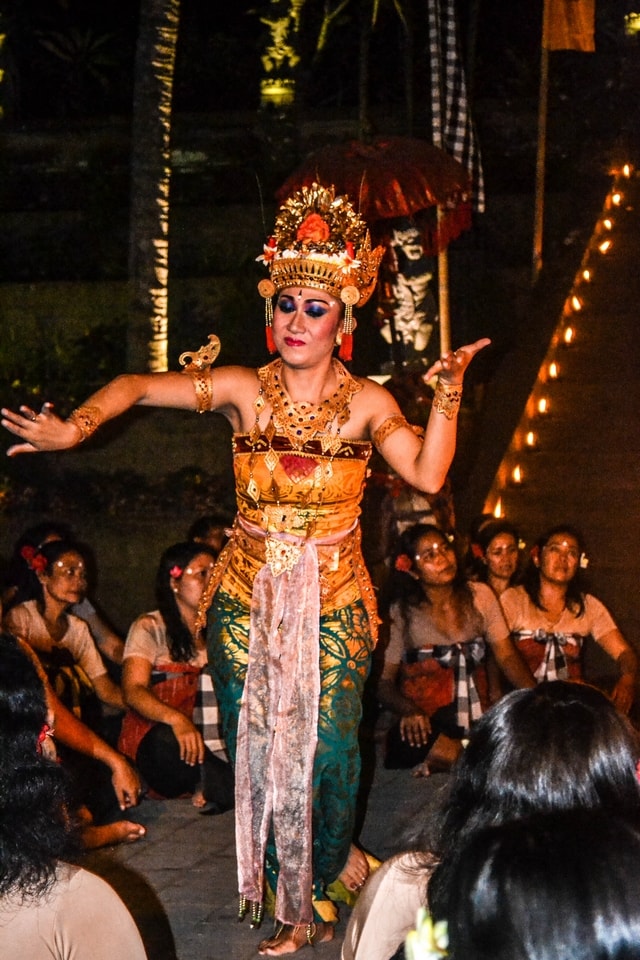
The modern form of Kecak, the more touristy and commercialized one, was popularised by a German painter named Walter Spies and a Balinese dancer called Wayan Limbak. This happened in the 1930s when both of them incorporated components of Ramayana into the spiritual Balinese dance. Thus, was born the modern dance of Kecak.
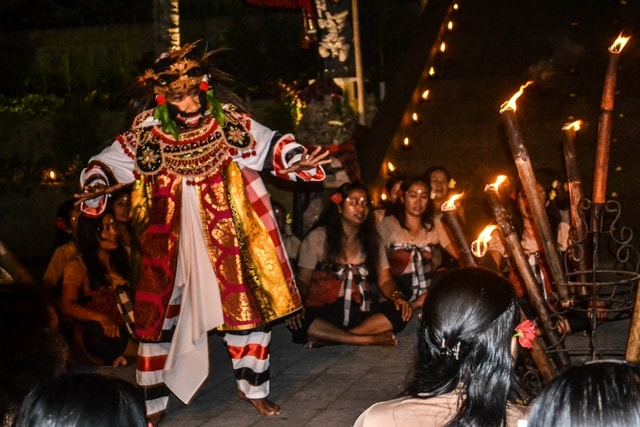
A Brief of The Performance
The performance begins with the arrival of 100+ performers on stage who sit down to chant “kecak” in a chorus. The principal characters arrive after that. Ram’s beautiful wife, Sita, is kidnapped by the bad man, Ravana and taken to a faraway land. Ram seeks the help of Monkey God, Hanuman and his army to defeat Ravana and bring back Sita. The story ends with a bitter battle between Hanuman’s monkey army and Ravana’s demon army. Good triumphs over evil. The performance ends with a man walking over red-hot coconut shells i.e. the fire: a dramatic finale to an already energetic performance.


Where Can You Watch A Kecak Fire Dance?
Ubud is certainly the best place to watch a Kecak dance because there are a number of shows going on every week. Plus, there are so many other things to do in Ubud like visiting one of the beautiful Balinese temples, visiting the Sacred Monkey Forest, or doing the Campuhan Ridge Walk. You will never run out of options.
Kecak dances are organized in and around the city center in Ubud. You can find all the relevant details here. Other parts of Bali also host similar shows. Getting around in Bali is not a problem because of the sheer number of local transport options available here. So, hop into a bemo and get anywhere you want to. The shows generally start between 7 – 7:30 pm and last about 90 minutes.
Pura Luhur Uluwatu or the Temple of Uluwatu which is located on the sea coast is a popular Kecak-watching destination. Here, the dance is conducted at sunset. You can watch the dancers against a backdrop of the sea and sky, both changing colors as the sun decides to set for the day. The effect can be mesmerizing. The dance is usually included in a full day or a half day tour to Uluwatu.
Sometimes I feel that Kecak has been made almost synonymous with Uluwatu. People think of “Kecak at Uluwatu” whenever they think of Kecak in general. But Kecak is so much more than that. Kecak can be a really enthralling experience wherever you watch it. And some of the groups in downtown Ubud do a great job at it. For example, Ubud has a women’s only Kecak performance (one that I have the pictures from) which is far more evocative and graceful than many of the male-only ones! My advice is to not restrict yourself and be open to options as you go along.

Interesting Points About Kecak
- Kecak has no musical background except the rhythmic chanting of “chak kechak kechak” by the performers.
- Kecak originated as a men-only dance form but has now progressed to adopt women performers. There are a couple of women-only performances in downtown Ubud.
- Kecak did not arise in Hinduism. It is more like both of them fused in the 1930s to give birth to a more touristic and dramatic version of the original Kecak Fire Dance.
Have you been to a Kecak fire dance? What did you like about it? Are there other interesting performances in Bali? Feel free to drop me a line below and let’s get the conversation going.
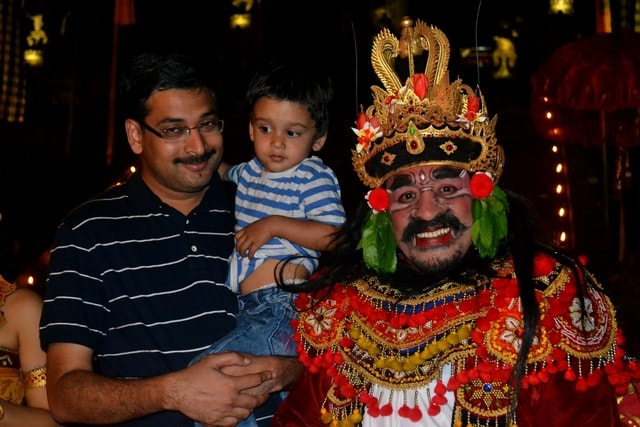
Falling in love with Bali’s culture? Why not check out my other posts on Bali? Click here.

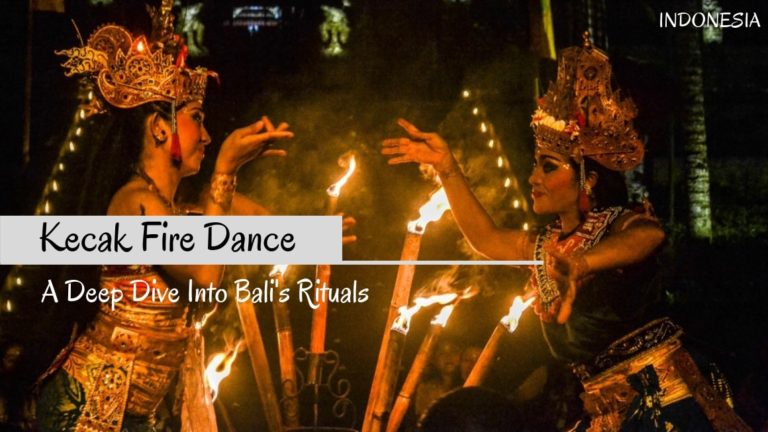




What a delight it would have been to witness a Kecak Fire Dance. The fact it is based on Ramayana makes it so special and to see something like this in Indonesia would have been thrilling. The pictures are beautiful and it does look like a cultural extravaganza for sure. Loved to read about how it originated. No musical background but a rhythmic chanting. Wow. Whenever we make it to Bali, this will definitely be on our list!
You will love it Navita. I am glad I could inspire you to put it in your bucket list.
Watching this unique type of fire dance which is also depicts Ramayana stories is great. I never knew of such type of Kecak fire dance performances takes place in Bali. I loved the distraught Sita character and it looks so real. It is great to see Ram and Sita performances away from India on foreign land.
Yeah, this was so similar to the Ramayana performances that I have seen in India and yet so different. I absolutely enjoyed it.
This is amazing . Bali has so much to offer then just the beautiful beaches that are promotes. Thanks for sharing a great pice of tradition. I would love to watch the Kecak dance and as you suggest the best will be in Ubud. It looks very intriguing with the lovely costumes and the fire. thanks for sharing
Yeah, Ubud definitely has some of the great dances. Hope you get to watch a really nice. Would love to hear about it.
You took me back in time about 30 years! That’s when I saw my first kecak dance in Bali. I remember being mesmerized by the dancers’ movements but was not aware of the story. Thank you for adding a new dimension to this experience!
Wow that is such an amazing thing. Were these dances the same then? I mean the costumes and all?
What a beautiful story they tell. I can only imagine how powerful it is to watch, especially with that number of people in the “chorus.” And those costumes are stunning; I bet they glow in that sunset.
Yeah absolutely! I could spend hours only looking at those costumes.
I have visited Bali in April and now I really pity that I did not take the chance to also see a kecak fire dance. Our local guide strongly recommended but we simply did not have the time. I can already imagine these 100 performers that start to bring the visitors in the right mood until the big final with a lot of emotions and impressions. If I ever re visit Bali I will definitely not miss this opportunity to see this dance.
I understand. There is always so much to do and so little time. I feel the same too after all my trips. Hope you get to see it the next time you are there.
It is interesting that this fire dance is so vastly different than the Hawaiian fire dancing. I am fascinated by how at first glance these look similar, and how the ritual has changed over time, formerly male dancer now more female dancers. The traditional hats are so iconic for the region.
Thats right. I would like to read up in depth about the Hawaiian fire dance. Do let me know if you have a post on that.
Amazing! I went to Bali few years ago and I remember seeing this particular dance and loving it! I completely forgot about it until now. Thank you for taking me back in time…
I am so happy to have refreshed your memories. After all these are our most precious possessions. 🙂
What an informative post about kecak, definitely learned a lot about the origins and what it must be like to watch the kecak for myself. On my list for when I finally make it to Bali!
Thank you Kavita. I am glad I could put it on your list.
Couldn’t agree more! When visiting Bali, it’s also important to learn about local customs and traditions and not just visit all the beautiful places this paradise has to offer. This is a great way to do that. Great article, thank you for sharing
It is true. Local culture is as important to me as the place itself. Thank you for appreciating.
I was there a few years ago and it was truly mesmerising. I saw that at Ulu Watu and its was a setting right across the cliff and the beautiful temple. Cant imagine of a better setting. And the dancers do go into a kind of trance during the dance. Amazing! Loved your night shots too BTW!
Agree. Uluwatu is beautiful. Thanks for the appreciation.
Well written and worth knowing facts.
Thank you 🙂